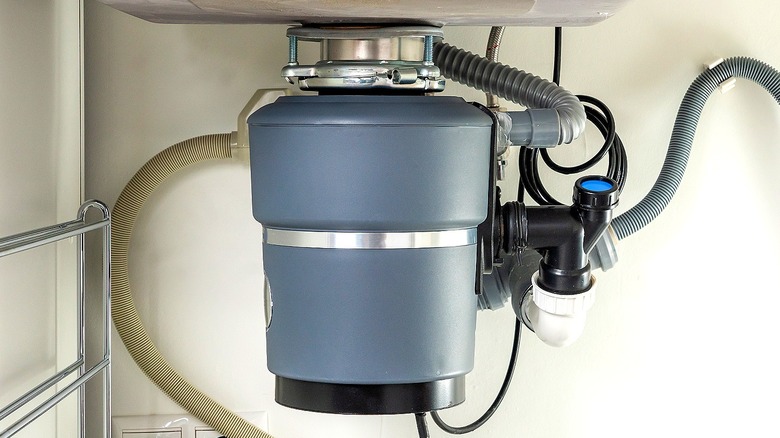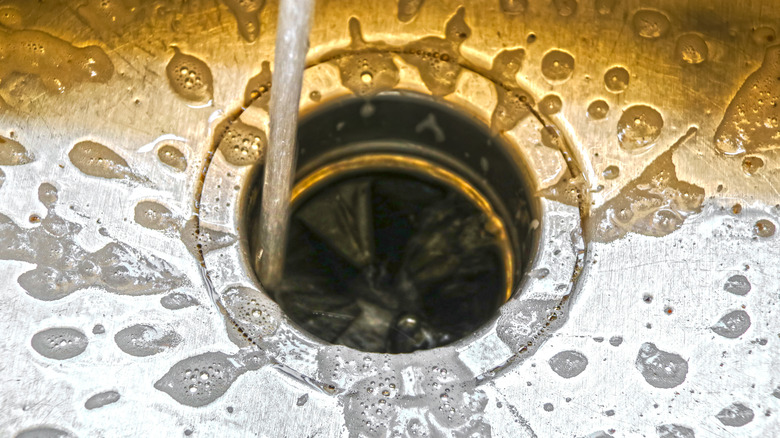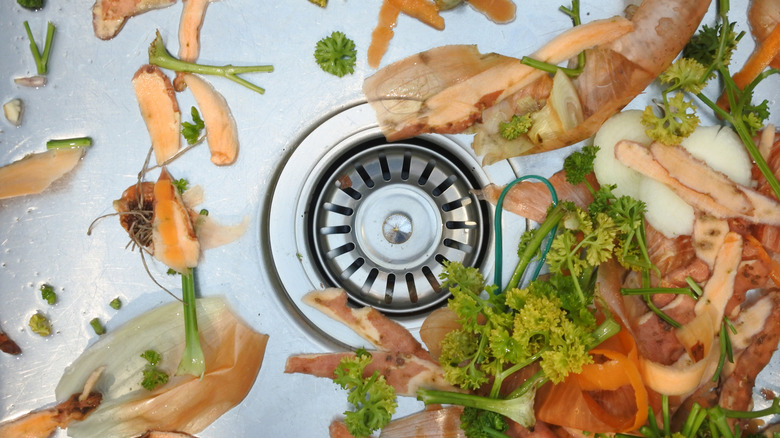How To Easily Unclog Your Garbage Disposal
A little over half of homeowners in the United States have a garbage disposal, but that still doesn't make it a pleasant experience when it suddenly decides to stop up. Luckily, this is a minor situation that can typically be resolved by using a plunger or all-natural liquid drain cleaner. The cold, hard truth is that garbage disposal clogs will happen, and the main culprit can be traced to improper use. This means you're treating your disposal as a glorified trashcan and not using discretion when it comes to what goes down the chute. In addition to improper use, dull blades can also pose a problem, as can a garbage disposal that's way past its prime.
What most individuals might fail to realize is that with proper use, your garbage disposal is considered to be more sustainable than your trashcan. (Still, use your better judgment when disposing of food in your disposal.) This is because using your garbage disposal lessens food waste in landfills, which are a major contributor to greenhouse gasses.
It's a basic step-by-step process
When you notice that your garbage disposal isn't draining, the first thing you should do is turn it off. While that might sound counterintuitive, you'll want to make sure you do this because your next step is to go searching for the source of the clog. This sometimes requires you to get your hand in there, but once you've identified what the issue is, then you need to break it up. If the water doesn't immediately drain, then use a sink plunger to try and dislodge whatever's deep inside. Sometimes the clog can be further along than just the garbage disposal, so this extra pressure should help push the clog out and away.
If plunging fails to work its magic, then it's time to go the liquid drain cleaning route. Remember that while Drano is labeled as safe for use in garbage disposals, it's not recommended. That's why a solution of baking soda and vinegar is a better choice. Pour one cup of baking soda down the disposal and follow it with a cup of vinegar. Let it sit for 10 to 15 minutes and then flush it out with a pot of boiling water. When all else fails, you can try to use a plumber's snake. Depending on your confidence level, you might want to consult a professional, just in case.
Keep up on the upkeep
Once your clog has been cleared, it's important to practice routine cleaning to keep your disposal operating smoothly. Remember to practice proper disposal etiquette. That means no coffee grounds, eggshells, fats and-or oils that harden at room temperature, and fibrous fruits and veggies. However, some newer and more environmentally friendly disposals are also equipped to handle meat bones, which removes them from greenhouse gas-emitting landfills.
It's a general rule of thumb that the more often you use it, the more you should clean it. To keep the cutting blades as "sharp" as possible, you can periodically grind up ice cubes, which are thought to help dislodge any caked-on food pieces. Adding in a small piece of citrus peel along with the cubes also acts as a deodorizer. In addition to feeding your garbage disposal pieces of ice, utilizing the baking soda and vinegar mixture will also help clean out any residual gunk stubbornly stuck inside your disposal. However, if your garbage disposal is frequently clogging, emitting abnormal noises, and consistently giving off a rather funky smell, that might mean it's time to get a new garbage disposal.


